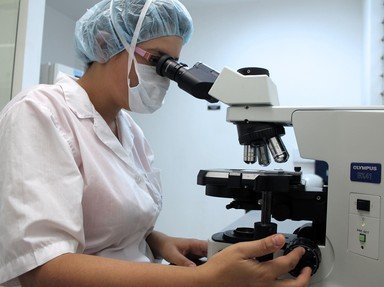Quiz Answer Key and Fun Facts
1. The base of a phospholipid bilayer cake is phospholipids, since they make most of the fluid mosaic model. Phospholipids are made up of two different parts, one hydrophobic and one hydrophilic. Which two elements located in the head of the phospholipids make it polar?
2. The next ingredient in our phospholipid bilayer cake is proteins. Membrane proteins are all over the membrane and each has a specific function. Which of these membrane proteins function as transport channels - integral or peripheral?
3. Cholesterol is another very important ingredient in our phospholipid bilayer cake, since this steroid is needed to create the animal cell membrane. Which of these describes the function of cholesterol in the cell membrane?
4. Peripheral proteins are a kind of membrane protein which has an hydrophilic surface. Should these proteins be removed from our phospholipid bilayer cake, would that damage the membrane?
5. A phospholipid bilayer cake will often restrict the entrance of different molecules. Which of these processes describes the entrance of water to the cell membrane?
6. Lipids have two different affinities, so they can either be polar (attracted to water) or non-polar. Which word describes this behavior?
7. A phospholipid bilayer cake will always have the same shape: phospholipids that connect their hydrophylic parts with fluids in the membrane and hydrophobic parts that connect to each other. Which of these terms best describes the bilayer?
8. A phospholipid bilayer cake cannot be complete without carbohydrates. Carbohydrates are the main source of energy, and are classified in monosaccharides, disaccharides and polysaccharides. What is the type of bond that joins carbohydrates together called?
9. Proteins can take different shapes within the cell membrane. Which Greek letter accompanies the helix structure of the protein in the phospholipid bilayer cake?
10. Glycolipids and glycoproteins are both very important components of the phospholipid bilayer cake. Which of these properties do they share?
Source: Author
Lpez
This quiz was reviewed by FunTrivia editor
rossian before going online.
Any errors found in FunTrivia content are routinely corrected through our feedback system.

